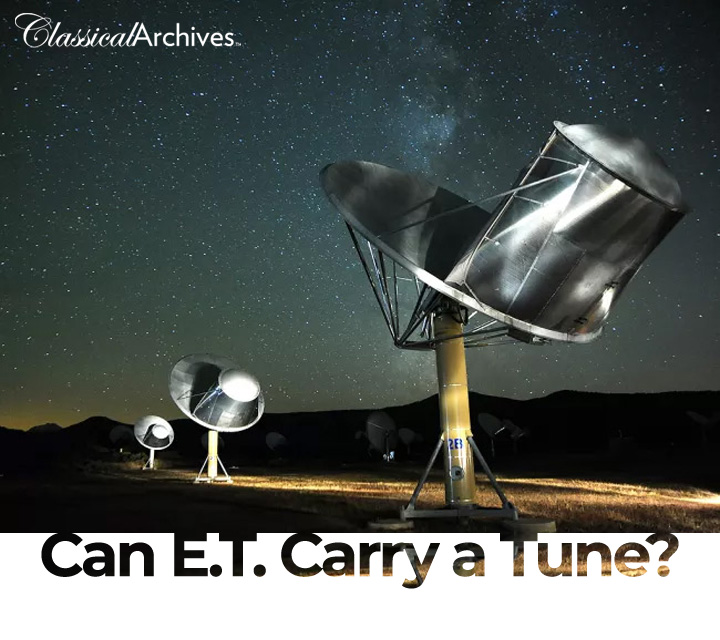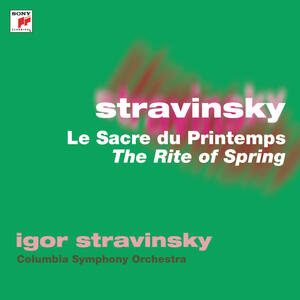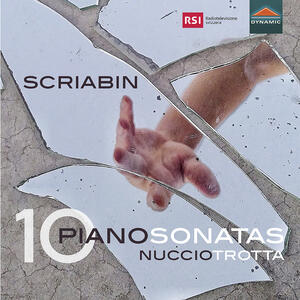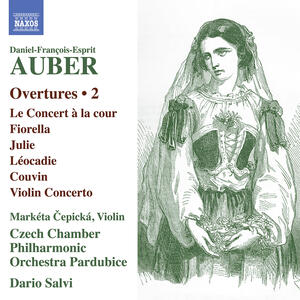
|
||||
|
Music is said to be the common language of humanity. But is it something particular to our species or could extraterrestrial beings also have music? That may seem like a senseless question, given that we’ve never found proof that aliens exist. But that situation might soon change. There’s an ongoing effort by a small group of scientists to use large antennas to hunt down radio signals from other societies that are light-years away, an effort known as SETI the Search for Extraterrestrial Intelligence. SETI gains impetus from the knowledge that a trillion planets are scattered throughout the Milky Way galaxy. That enormous tally makes it difficult to argue that no one is out there. So if aliens turn out to be for real, it’s justifiable to wonder if they also have a musical muse. Indeed, would they even know what music is? We can’t ask them, but we can make an argument that is – while not ironclad – decent conversation fodder for your next dinner party. In biology, there’s a general phenomenon called “convergent evolution.” The idea is simple, namely that Darwinian evolution will frequently lead to similar solutions for similar environmental challenges. One example is the development of eyes. Most multicellular organisms have evolved some form of vision because Earth is flooded with sunlight, and having an eye or two might help you to both catch dinner and avoid becoming dinner yourself. Similarly, the ability to hear can be a life saver for organisms that live in cluttered environments (e.g., forests) where sight lines are short. You might hear danger before you see it. For humans, being sensitive to sound has permitted language, which is perhaps hearing’s greatest app. Indeed, language is so useful for disseminating information that we can assert its existence among the cosmos’ brainier beings. Convergent evolution makes the case. But music? Sure, it may soothe the savage breast, whatever that means. But how does music help us survive? Or more relevantly, how did it help our Paleolithic predecessors survive? Asked another way, what good is music? Biology is generally parsimonious, and traits that aren’t helpful aren’t kept. While the jury’s still out on this, there seem to be three general suggestions to explain our tuneful natures. The first is that, frankly, music is a superfluous artifact of other abilities, such as understanding speech. Because we have sophisticated systems to hear and interpret verbal communication, we also like certain rhythms and tonal sequences. Harvard psychologist Steven Pinker wrote that music is “auditory cheesecake” – a pleasurable artifact. You enjoy music because you can. A second idea is that music arose because it was a social glue that helped our ancestors bond with one another and with a group. Song-and-dance displays are useful for keeping kith and kin together, and perhaps intimidating others. You like music because if your predecessors didn’t, they would have been obliterated by another tribe that was more cohesive. A third idea is derivative from the ideas of Geoffrey Miller, an evolutionary psychologist at the University of New Mexico who argues that music’s utility is to signal “fitness” to potential mates. If a male has musical talents, that’s a useful mechanism for giving females insight into your genome. To play an instrument, to sing, or even tell a joke demands complex neurological performance. Evolution has tuned females to read such displays as indicating genomic health, and a favorable prospect for any eventual offspring. (As an aside, this theory has the ancillary benefit of providing a provocative explanation for why 25,000 teenage women stormed a theater in Times Square when Frank Sinatra appeared there in 1944.) If any of the above theories is correct, it implies that our ability and affinity for music is nature, not nurture. This has been demonstrated by testing infants. They seem to like fifths and fourths, rather than wolf tones. So, invoking convergent evolution, and noting that – as in the case of Homo sapiens – intelligent extraterrestrials are likely to be social animals, it seems as if music is very likely to be in their repertoire, as it were. Consequently, the effort of scratching 90 minutes of music onto the Voyager golden record – hurled into the depths of space in the 1970s – might be more than self-indulgence. The aliens just might like it. |

|
||
|
Last week we published “Can E.T. Carry a Tune?”, a blog post by Seth Shostak, Senior Astronomer at the SETI Institute. We are pleased to include it this article in this newsletter. Inspired by Seth’s ideas, we remembered that back in 1977, NASA took a stab at selecting audio tracks for extraterrestrials. NASA’s goal was to help outer-space beings understand what life is like on Earth and to explain who we are. NASA put its selections onto two gold-plated records and sent them into outer space on the Voyager I space probe. Voyager I, by the way, is now about 14 billion miles from Earth. We assume that its two golden disks are tucked safely away, awaiting their eventual use at an extraterrestrial record hop. SETI the Search for Extraterrestrial Intelligence. SETI gains impetus from the knowledge that a trillion planets are scattered throughout the Milky Way galaxy. That enormous tally makes it difficult to argue that no one is out there. What Selections Did NASA Make for the Golden Disks? Classical Music on the Golden Disks We are pleased to offer you a selection of the music that NASA shot into space. If you are a member of Classical Archives, CLICK HERE to listen to them all on just one playlist. Here’s what you are about to hear. Please note that when one of tracks on our playlist is the same recording that NASA sent into space, we will indicate that fact below. |
||
| Selection One: Brandenburg Concerto No. 2 in F Major, BWV 1047; First Movement (Allegro) by Johann Sebastian Bach The first movement of the second Brandenburg Concerto should let aliens know that humans are capable of writing highly organized and architectural music that is beautiful too. It will also let aliens know that we have learned to play the trumpet. This excellent recording is not the same track that NASA selected for its Golden Disks. But like the one that NASA launched, it is conducted by the great Bach interpreter Karl Richter. |
||
| Selection Two: Partita for Violin No. 3 in E Major. III: Gavotte en Rondeau BWV 1006 by Johann Sebastian Bach More Bach! This time, expressing pure melodic beauty that is sure to bring a tear to any sentient being’s eye. This recording by lutenist Narciso Yepes is not the same recording launched by NASA, which featured violinist Arthur Grumiaux. Why? We were not able to obtain the Grumiaux recording. |
||
| Selection Three: The Well-Tempered Clavier, Book II: Prelude and Fugue No. 1 in C Major BWV 870 by Johann Sebastian Bach (two playlist tracks We are pleased to offer you this recording by Glenn Gould. However note that the recording on our playlist dates from Gould’s recording of 1987-1989 and therefore, is a later recording than the one NASA shot off to parts unknown. |
||
| Selection Four: The Rite of Spring (Le Sacre du Printemps), Part II – Sacrificial Dance (“The Chosen One”) by Igor Stravinsky NASA was willing to shake aliens up a bit by offering them the sacrificial dance from Sacre. (Take that, aliens, we sometimes dance ourselves to death!) We will hear the same recording that NASA shot into space, featuring the Columbia Symphony Orchestra conducted by the composer. This recording features Bernard Herrmann conducting the London Philharmonic Orchestra. |
||
| Selection Five: The Queen of the Night’s Vengeance Aria from Act II of Die Zauberflöte K. 620 by Wolfgang Amadeus Mozart NASA also sent aliens a recording of “der Hölle Rache,” the Queen of the Night’s vengeance aria from Mozart’s Magic Flute. In it, the evil Queen exhorts her daughter to murder the enlightened priest Sarastro. (Hey, we humans can’t be nice all the time, can we?). We are not able to offer you the same recording that NASA selected, which featured Edda Moser. But we are pleased to include this worthy alternate, a stellar performance by Wilma Lipp, who performed this role more than 400 times during her career. As was the case with NASA’s selection, this performance is conducted by Karl Böhm. |
||
| Selection Six: Cavatina (fifth movement) from the String Quartet No. 13 in B-Flat Minor Op. 130 by Ludwig van Beethoven NASA apparently wanted to see how extraterrestrials would react to the sublime, ineffable beauty in this cavatina from Beethoven’s Op. 130. This historical recording by the Budapest String Quartet is the same one the aliens might be enjoying right now. |
||
| Selection Seven: Symphony No. 5 in C Minor, Op. 67 by Ludwig van Beethoven (four tracks) If you were trying to present humanity’s highest artistic achievements, you would select Beethoven’s No. 5, would you not? And indeed, NASA did. One quibble? NASA only sent the first movement to our new alien pals. But because we want to treat you better than NASA treated them, we have included a complete recording of the symphony – all four movements – on your playlist. Enjoy. This performance is by the London Philharmonic Orchestra conducted by Nic Raine. This is the same recording that aliens might be listening to right now. It is a performance by the Philharmonia Orchestra, conducted by Otto Klemperer. |
||

We have recently launched an app for
SONOS wireless speakers
If you happen to have them, we invite you to access
Classical Archives via SONOS
https://www.sonos.com/en-us/streaming-music
|
|
|
| If you do not wish to be contacted again about our developments, click <unsubscribe> |






















